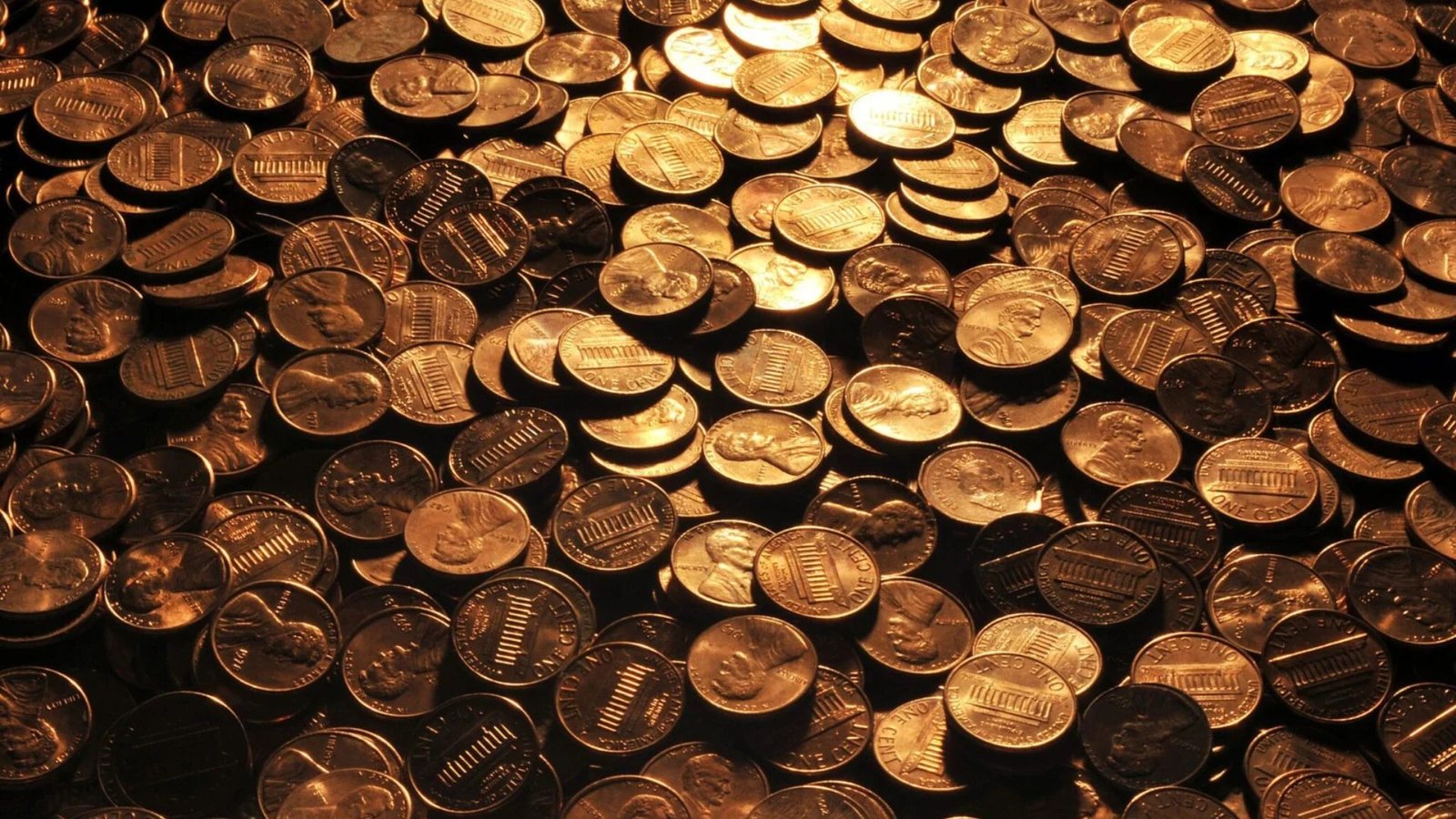When you think of pennies, you probably imagine small copper coins worth just one cent. But in the world of numismatics (coin collecting), certain pennies from the 20th century are worth hundreds, thousands, or even millions of dollars. These rare coins are highly sought after for their history, minting errors, and limited availability.
If you’ve got a jar of old coins tucked away, you might want to check for these 9 rare pennies of the twentieth century—you could be holding a hidden treasure.
1. 1909-S VDB Lincoln Wheat Penn
- Value Range: $700 – $3,000+ (depending on condition)
- Why It’s Rare: The 1909 Lincoln Wheat Penny was the first year of issue, and coins minted in San Francisco with designer Victor David Brenner’s initials “VDB” on the reverse were pulled from circulation shortly after release. Only 484,000 were made, making them a top collector’s favorite.
2. 1914-D Lincoln Wheat Penny
- Value Range: $300 – $5,000+
- Why It’s Rare: With only 1.2 million minted in Denver, this penny is scarce—especially in higher grades. Many ended up heavily worn in circulation, so finding one in near-mint condition is a jackpot.
3. 1922 No D Lincoln Wheat Penny
- Value Range: $500 – $15,000+
- Why It’s Rare: Due to a worn die at the Denver Mint, some 1922 pennies were struck without the “D” mintmark. This error variety is extremely popular and commands high prices.
4. 1931-S Lincoln Wheat Penny
- Value Range: $100 – $200+
- Why It’s Rare: The Great Depression reduced coin production drastically. Only 866,000 were minted in San Francisco, making this one of the lowest mintage wheat pennies of the century.
5. 1943 Copper Penny
- Value Range: $100,000 – $1,000,000+
- Why It’s Rare: In 1943, pennies were made from zinc-coated steel to save copper for World War II. A few were mistakenly struck on copper planchets from 1942, creating one of the most famous and valuable coin errors in U.S. history.
6. 1944 Steel Penny
- Value Range: $75,000 – $200,000+
- Why It’s Rare: After 1943, pennies returned to copper, but a few steel planchets from the previous year were accidentally used. These rare 1944 steel cents are prized by collectors.
7. 1955 Double Die Obverse Penny
- Value Range: $1,000 – $20,000+
- Why It’s Rare: One of the most famous error coins, the 1955 Double Die shows dramatically doubled lettering on the date and inscriptions. Even worn examples are worth thousands.
8. 1969-S Double Die Obverse Penny
- Value Range: $10,000 – $75,000+
- Why It’s Rare: Similar to the 1955 error, this San Francisco–minted penny features strong doubling on “LIBERTY” and the date. The U.S. Secret Service once confiscated some, believing them to be counterfeits.
9. 1972 Double Die Obverse Penny
- Value Range: $200 – $1,000+
- Why It’s Rare: The doubling on this penny is bold and visible without magnification, making it a popular—and more affordable—error for beginner collectors.
Tips for Identifying Rare Pennies
- Check the Mintmark: “S” for San Francisco, “D” for Denver, and no letter for Philadelphia. Some mintmarks (or lack thereof) signal rarity.
- Look for Errors: Doubling, off-center strikes, and wrong-metal coins are worth more.
- Examine Condition: Coins in higher grades (less wear) fetch higher prices.
Final Thoughts
The 20th century produced some of the most collectible pennies in U.S. history. Whether it’s a minting mistake like the 1955 Double Die or a low-mintage rarity like the 1909-S VDB, these coins continue to captivate collectors worldwide.
So next time you check your pocket change or sort through a coin jar, remember—your penny might be worth more than you think.
FAQs
Q1: How can I tell if my penny is valuable?
Look for rare dates, mintmarks, and noticeable minting errors. Consulting a coin value guide or professional appraiser is the best way to confirm.
Q2: Where can I sell rare pennies?
You can sell them at coin shows, auction houses, reputable coin dealers, or online marketplaces like eBay (but always verify buyer credibility).
Q3: Should I clean my old pennies before selling them?
No—cleaning coins can damage their surfaces and significantly lower their value.

